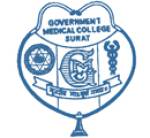This is an old revision of the document!
 |  |  |
<html><center><font color=“white” size=“+4”>Department of Anatomy</font> </center></html>
Goals/Objectives
The broad goal of the teaching of undergraduate students in Anatomy aims at providing comprehensive knowledge of the gross and microscopic structure and development of human body, to provide a basis for understanding the clinical correction of organs or structures involved and the anatomical basis for the disease presentations, and prepare him to be a teacher of Anatomy.
At the end of the course the students should be able to
From the integration teaching of other basic sciences, student shall be able to comprehend the regulation and integration of the functions of the organs and systems of the body and thus interpret the anatomical basis of disease process.
A.Knowledge
a.Comprehend the normal disposition, clinically relevant interrelationship, Functional and cross sectional anatomy of the various structures in the body.
b.Identify the microscopic structure and correlate elementary infrastructures of Various organs and tissues and correlate the structures with the functions as a prerequisite for understanding the altered state in various disease process.
c.Comprehend the basic structure and connection of the central nervous system To analyse the integrative functions of the organ and system. He/She shall be able to locate the site of gross lesions according to the deficits encountered.
d.Demonstrate the knowledge of the basic principles and sequential development of the organs and systems, recognize the critical stages of development and effects of common teratogens, genetic mutations and environmental hazards. He/She shall be able to examine the developmental basis of the major variations and abnormalities.
B.Skills
a.Identify and locate all the structures of the body and mark the topography of the living anatomy.
b.Identify the organs and tissues under the microscope.
c.Understand the principles of karyotyping and identify the gross congenital abnormalities.
d.Understand the principles of newer imaging techniques and interpretation of Computerised tomography (CT) scan, sonogram etc.
e.Understand clinical basis of some common clinical procedures. i.e. intramuscular and intravenous injection, lumbar puncture, kidney biopsy etc.
C.INTEGRATION:
D.CURRICULUM:
-Theory
a.GENERAL ANATOMY:
- Tissues of the body, organs and organ system.
- Bone-types, blood supply, nerve supply and lymphatics, ossification.
- Cartilage-types and distribution.
- Muscle-types, function, blood and nerve supply.
- Joint-classification, structure, distribution and function of each type
- Blood vessels-tyoe of vessel, anastomosis, collateral circulation, arterio-venous anastomosis.
- Lymphatic system-lymph nodes, lymphatics, circulation of lymph and functions of lymphatic system.
- functions of lymphatic system.
E.HISTOLOGY:
- Generic Histology
a.Cell structure
b.Tissues of the body: epithelium, connective tissue, bone, muscle, cartilage, glands and nervous tissue.
c.Blood vessels and lymphatic tissue.
- Systemic Histology:
a.Gastrointestinal,respiratory, cardiovascular,urinary, reproductive Systems-male and female
b.Special senses
c.Endocrine and exocrine glands
F.GROSS ANATOMY
- General Introduction
- Anatomical positions, Anatomical terms.
- Regional anatomy, superior xtremity, inferior extremity, thorax, abdomen, pelvis, neck and brain.
- Radiological anatomy.
- Surface anatomy
- Applied and clinical anatomy.
G.EMBRYOLOGY:
1.Introduction:
Male and female genital tracts, spermatogenesis, oogenesis, fertilization, Cleavage, implantation, placetnta, embryonic stage, formation of systems of body, Twins, common foetal malformations.
2.Organisation:
Development of organs and systems of the body: alimentary, circulatory, Respiration, urogenital, nervous system, endocrine, special senses, Integumentary system etc., congenital malformations
Genetics:
- Fundamentals of human genetics.
- Cell division-mitosis and meiosis.
- Human chromosomes, karyotype, structure and abnormality,Klinefelter’s Syndrome, Turner’s syndrome, Down’s syndrome etc.
- Sex chromosomes, sex linked genes, sex chromatin.
- Chromosomal abnormalities.
- Reprductive organs – male and female
- Ovulation, corpus luteum,ovarian cycle
- Trasport of sperm, fertilization
- Viability of ovum and sperm,safe period
- Cleavage and transport of ovum
- Uterine cycle,Menstrual cycle
- Embedding of blastocyst
- Formation of embryo
- Form of embryo at various stages
- Membrane and placenta
Practical
1.GROSS ANATOMY
- Dissection of entire cadaver: of dissected soft parts and organs. Supplemented by study of museum specimens, models and charts.
- Study of human bones and joints
- Determinations of age and sex from the bones
2.HISTOLOGY:
- Study of light microscope
- Common objects seen under the microscope.
- Appearance of objects in section.
- Demonstration of tissue processing, section cutting and staining section
- Study of prepared histological slides of normal mammalian tissues and organs of the body
3.EMBRYOLOGY:
- Demonstrations of embryology models.
- Sections of developing chick embryo
- Specimens of congenital anomalies.
4.RADIOLOGICAL ANATOMY
- Demonstration of normal skiagrams of various parts and organs of the Body.
- Skiagrams of special investigations of various systems of the body.
- Skiagrams showing ossification of bones and determination of age.
- Skiagrams of pregnant uterus showing foetus of various ages
5.SURFACE ANATOMY:
Surface marking of various organs and structure:
a.On the living body
b.On the cadaver.
6.Ossification of bones, diaphysis, union and age determination.
CME, Conference, academic activity conducted

Department of Anatomy, GMC, Surat had organised a one day state level CME on “ Anatomical aspects of congenital Heart Diseases” on 2nd April 2016. Eminent speakers across the India had shared their valuable experience with large number of audience came from various colleges of Gujarat.
Speakers
Instruments used in dissection hall by Dr. T. C. Singel
Developmental aspects of CHD by Dr. Raksha Bhatt
Organ and Body Donationby Dr P. Shiroya
Applied aspects of CHD by Dr. Shreepal Jain
Genetic aspects of CHD by Dr. Sheetal Sharda

Speaker:Dr Raksha Bhatt, Ex Professor, Anatomy , Pramukh Swami Medical college, Karamsad.

Speaker: Dr T. C. Singhel , ex Professor & Head, BJMC, Ahmedabad.

Audiance From Various Colleges of Gujarat

The former dean of GMC,Surat DR R Dixit And various faculties of Medical College.
